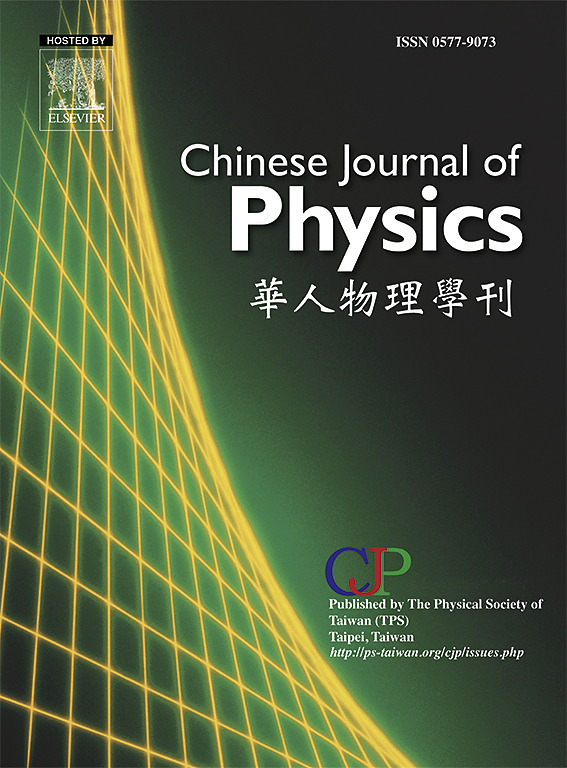Observational constraints on a modified-gravity model with an exponential function of the curvature using the expansion history, the RSD, and the Pantheon+SH0ES data
IF 4.6
2区 物理与天体物理
Q1 PHYSICS, MULTIDISCIPLINARY
引用次数: 0
Abstract
Considering a well-motivated modified-gravity model, in which an exponential function of the curvature is included, in this paper we implement a statistical data analysis to set constraints on the parameters of the model, taking into account an analytic approximate solution for the expansion rate, . Using a Monte Carlo Markov Chain-based analysis of the expansion rate evolution, the standardized SN distance modulus and the redshift space distortion observational data, we find that the preferred value for the perturbative parameter, , quantifying the deviation of the model from CDM, lies in a region that excludes at C.L., and that the predicted current value of the Hubble parameter, , locates in between the two observational results currently under scrutiny from Planck and SH0ES collaborations. Under the implemented approximate solution, and with the constraints obtained for the parameters, the proposed model successfully reproduces the observational data and the predicted evolution of interesting cosmological parameters resemble the results of CDM, as expected, while an oscillatory behavior of the dark energy equation of state is observed, pointing to deviation from the concordance cosmological model. The results presented here reinforce the conclusion that the modified-gravity model represents a viable alternative to describe the evolution of the Universe, avoiding the challenges faced by CDM.

基于膨胀历史、RSD和Pantheon+SH0ES数据的曲率指数函数修正引力模型的观测约束
考虑一个包含曲率指数函数的良动机f(R)修正重力模型,在考虑膨胀率H(z)的解析近似解的情况下,本文实现了统计数据分析,以设置模型参数的约束。通过对膨胀率演化、标准化SN距离模量和红移空间畸变观测数据的蒙特卡洛马尔可夫链分析,我们发现量化f(R)模型与ΛCDM的偏差的摄动参数b的优选值位于一个不包括b=0的区域,而哈勃参数H0的预测值,位于目前正在普朗克和SH0ES合作研究的两个观测结果之间。在实现的近似解下,在参数约束条件下,所提出的f(R)模型成功地再现了观测数据,有趣的宇宙学参数的预测演化与ΛCDM的结果相似,但观测到暗能量状态方程的振荡行为,表明与调和宇宙学模型存在偏差。这里提出的结果强化了f(R)修正引力模型是描述宇宙演化的可行替代方案的结论,避免了ΛCDM面临的挑战。
本文章由计算机程序翻译,如有差异,请以英文原文为准。
求助全文
约1分钟内获得全文
求助全文
来源期刊

Chinese Journal of Physics
物理-物理:综合
CiteScore
8.50
自引率
10.00%
发文量
361
审稿时长
44 days
期刊介绍:
The Chinese Journal of Physics publishes important advances in various branches in physics, including statistical and biophysical physics, condensed matter physics, atomic/molecular physics, optics, particle physics and nuclear physics.
The editors welcome manuscripts on:
-General Physics: Statistical and Quantum Mechanics, etc.-
Gravitation and Astrophysics-
Elementary Particles and Fields-
Nuclear Physics-
Atomic, Molecular, and Optical Physics-
Quantum Information and Quantum Computation-
Fluid Dynamics, Nonlinear Dynamics, Chaos, and Complex Networks-
Plasma and Beam Physics-
Condensed Matter: Structure, etc.-
Condensed Matter: Electronic Properties, etc.-
Polymer, Soft Matter, Biological, and Interdisciplinary Physics.
CJP publishes regular research papers, feature articles and review papers.
 求助内容:
求助内容: 应助结果提醒方式:
应助结果提醒方式:


